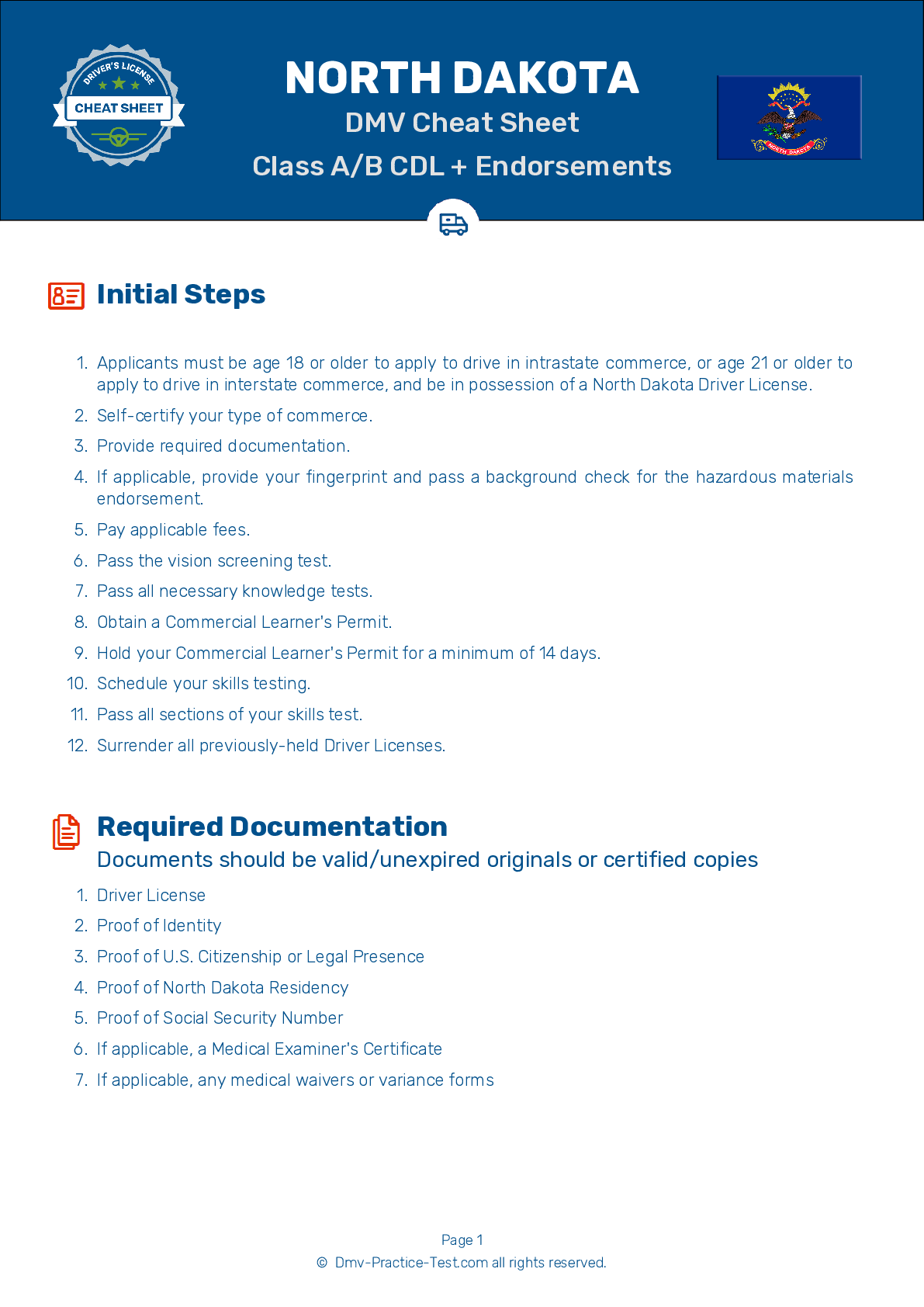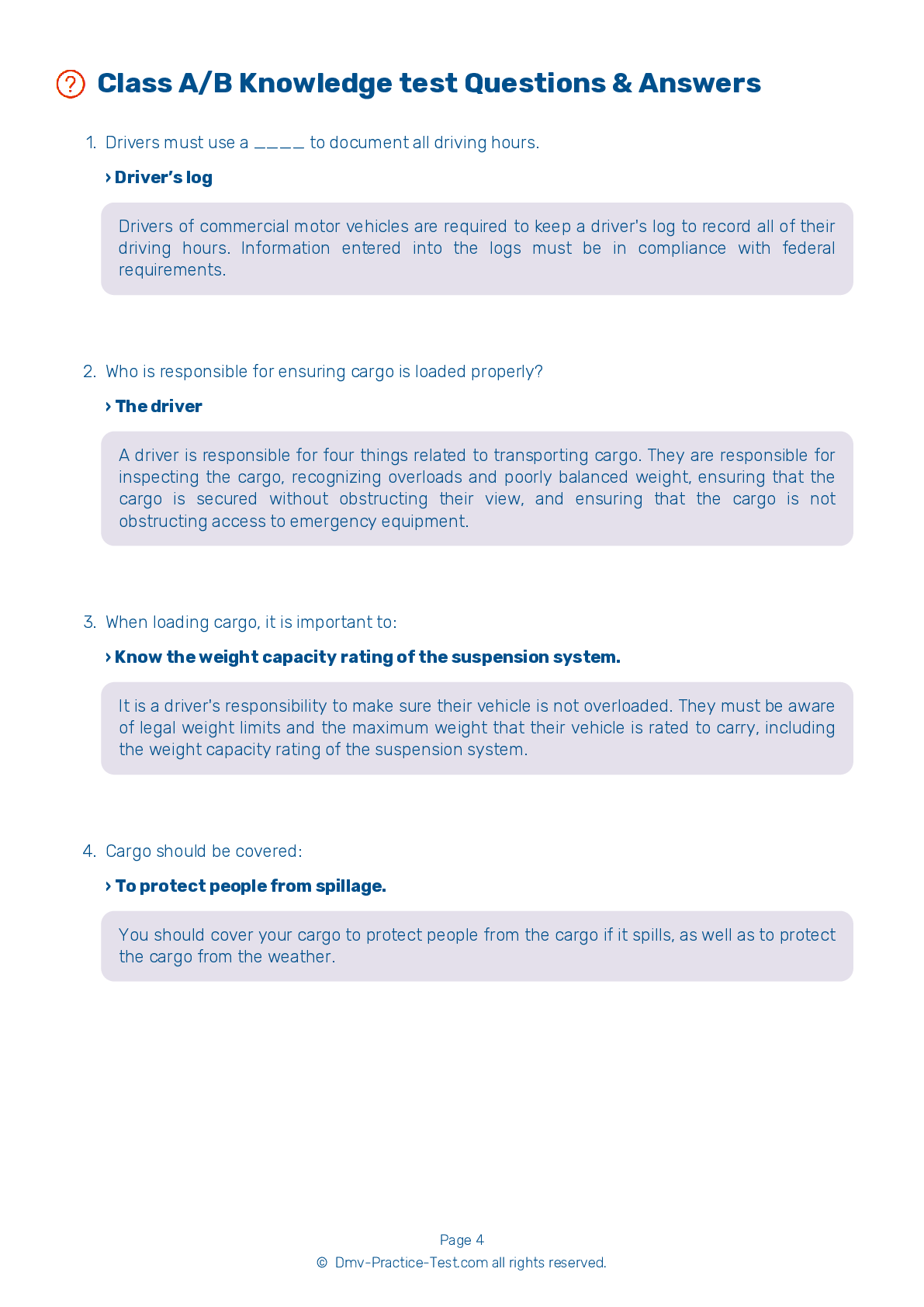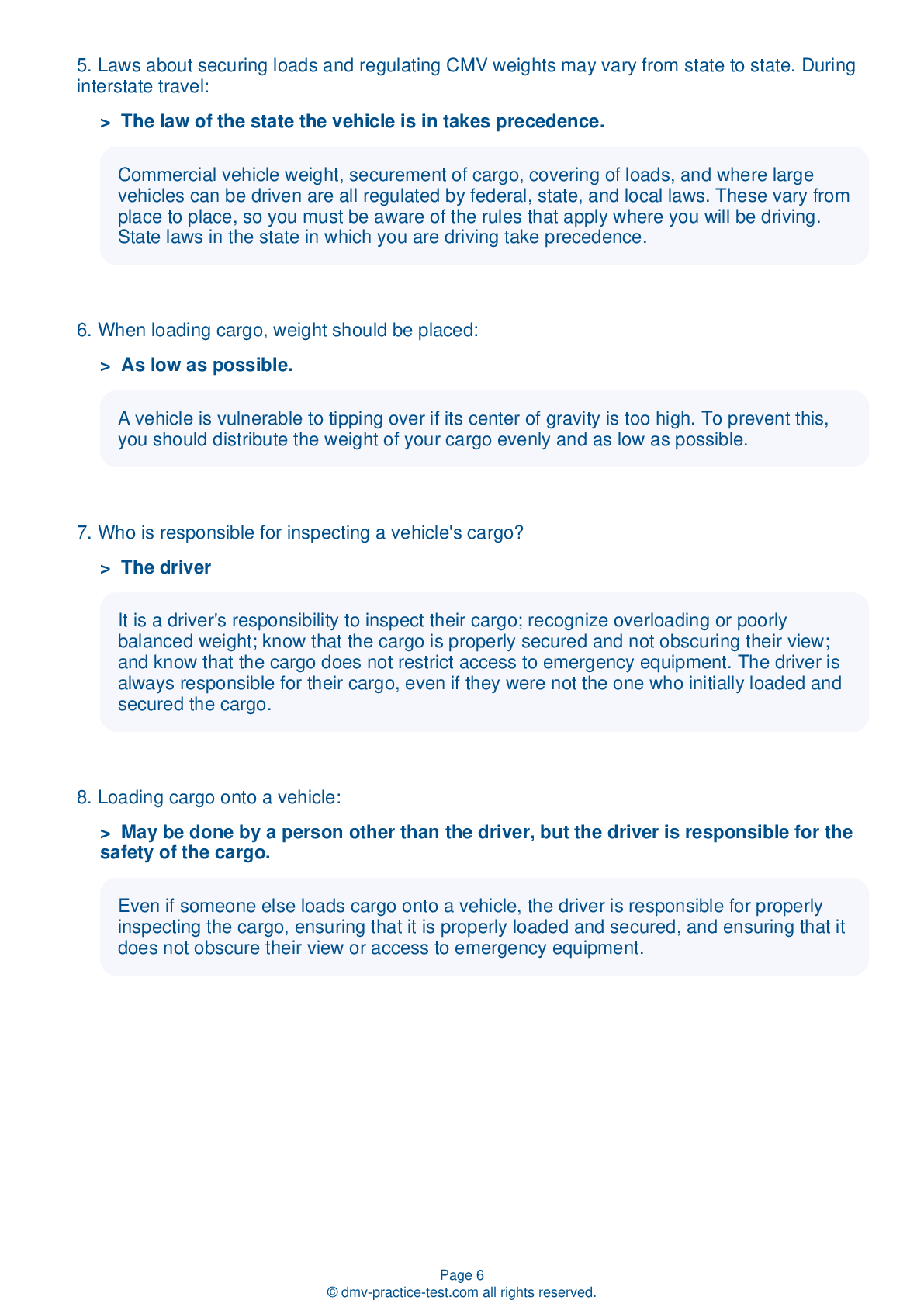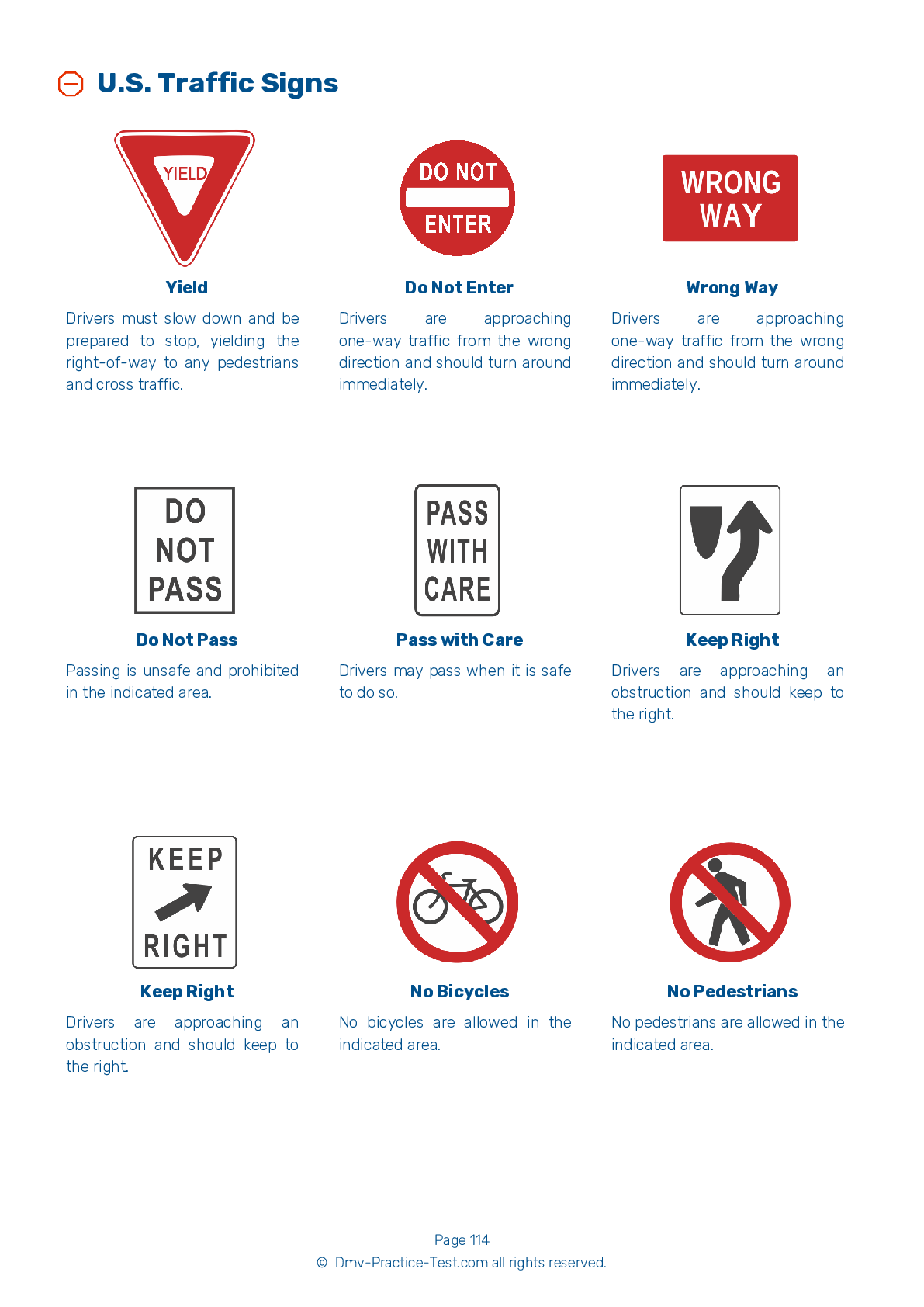HazMat #2
Hazmat Test | North Dakota 2025 #2 Page 4 of 5
On our website, we provide FREE practice - CDL hazmat test online! The official exam test consists of several obligatory parts, with all of them checking your knowledge of different blocks of road rules. If you need to obtain a ND CDL hazmat endorsement in 2025, practice as much as possible. Free sample tests published on our website will help you check and improve your knowledge and boost your grades. Please bear in mind that North Dakota requirements for issuing a hazmat endorsement for CDL may vary from those established in other states.
30
24
20
19 . During the on-road driving test, you should:
Drive in an unsafe manner.
During the on-road driving test, you must listen to and follow the directions given by the examiner. They will never ask you to drive in an unsafe manner.
20 . The only way to properly check tire pressure is by:
Measuring the height of the tire.
You should examine your tires at the beginning of every trip and after every stop to ensure that they are properly inflated. The only acceptable way to check tire pressure is to use a tire pressure gauge.
21 . If a product requires a "Poison Inhalation Hazard" placard, the placard must be used when transporting:
The product in a leaking container.
For applicable materials, the "Poison Inhalation Hazard" placard and the appropriate hazard class placard must always be displayed, even for small amounts of the materials.
22 . When alley docking, your vehicle should be parked:
At an angle within the boundaries of the parking space.
If you are asked to alley dock, you should first pull past the alley and stop your vehicle in a position that is parallel to the outer boundary. From there, you should back your vehicle entirely into the alley parking area. Your vehicle should be parked in a straight position within the boundaries of the parking space.
23 . If transporting chlorine, what must be kept in the vehicle?
Directions for emergency personnel
A driver transporting chlorine in cargo tanks must keep an approved gas mask and an emergency kit in their vehicle.
24 . Emergency response information provided by the shipper must include:
How many people should respond in the event of an accident.
At a minimum, emergency response information must include the basic descriptions and technical names of the materials being transported; immediate hazards to health; risks of fire or explosion; immediate precautions to be taken in the event of an accident or incident; immediate methods for handling fires; initial methods for handling spills or leaks in the absence of fires; and preliminary first aid measures.
2025 North Dakota | Frequently Asked Questions
In North Dakota, a Commercial Driver's License (CDL) Class B permits drivers to operate single vehicles with a Gross Vehicle Weight Rating (GVWR) of 26,001 or more pounds, or any such vehicle towing another not in excess of 10,000 pounds. This includes buses, farm labor vehicles, and any vehicle designed to transport 16 or more passengers including the driver.
A Class B CDL license in North Dakota allows the holder to operate single vehicles with a Gross Vehicle Weight Rating (GVWR) of 26,001 or more pounds, or tow a vehicle not exceeding 10,000 pounds. This includes large passenger buses, segmented buses, straight trucks, and dump trucks with small trailers.
To acquire a Class B CDL license in North Dakota, you must be at least 18 years old (21 for interstate driving), possess a valid North Dakota driver's license, pass a vision test, and successfully complete both a written knowledge test and a skills test, which includes a pre-trip vehicle inspection, a basic controls test, and a road test. You also need to pass a medical examination.
In North Dakota, you must be at least 18 years old to qualify for a Class B CDL license. However, if you intend to drive commercially across state lines (interstate driving), federal regulations require that you be at least 21 years old.
While a Class B CDL license in North Dakota allows you to operate a single vehicle weighing over 26,000 pounds, specific endorsements may be required for certain types of vehicles or cargo. For instance, a passenger endorsement is needed for vehicles designed to carry 16 or more passengers, and a hazardous materials endorsement is required for transporting hazardous materials.
The Class B CDL skills assessment in North Dakota consists of three parts: a pre-trip vehicle inspection to test your ability to assess if the vehicle is safe to drive, a basic controls test to evaluate your ability to control the vehicle, and a road test to measure your on-road driving skills, including turning, merging, and navigating intersections.
Yes, Class B CDL license holders in North Dakota are limited to driving single vehicles with a GVWR of 26,001 or more pounds, or towing vehicles not exceeding 10,000 pounds. They cannot drive a tractor-trailer combination. Additionally, without specific endorsements, they cannot drive vehicles carrying hazardous materials or more than 15 passengers.
In North Dakota, the written Class B CDL test is primarily administered in English. However, some testing centers may offer the exam in other languages. It's advisable to contact your local Department of Transportation office to inquire about available language options for the test.
Yes, North Dakota Department of Transportation provides accommodations for individuals with disabilities taking the Class B CDL written exam. You must provide documentation of your disability and specify the type of accommodation needed. It's recommended to make this request well in advance of your scheduled test date to ensure proper arrangements can be made.
Yes, if you do not pass the Class B CDL written test in North Dakota, you can retake it. However, you must wait at least one day before retaking the exam. There's no limit on how many times you can retake the test, but each attempt requires a new test fee. It's recommended to study thoroughly before retesting.



